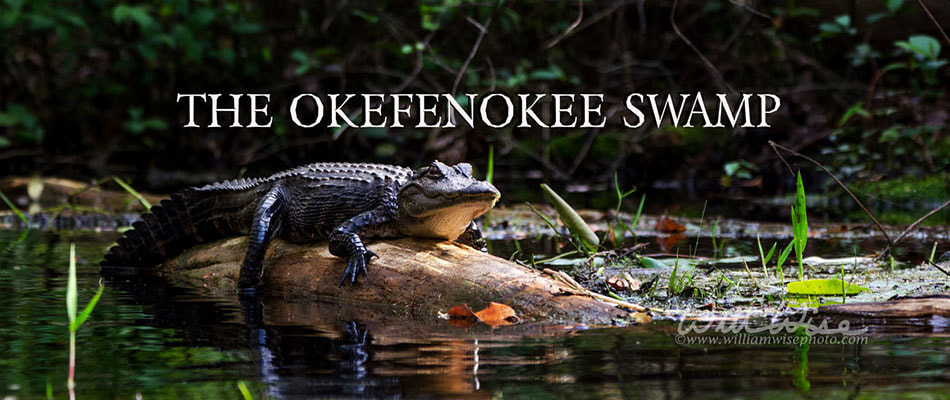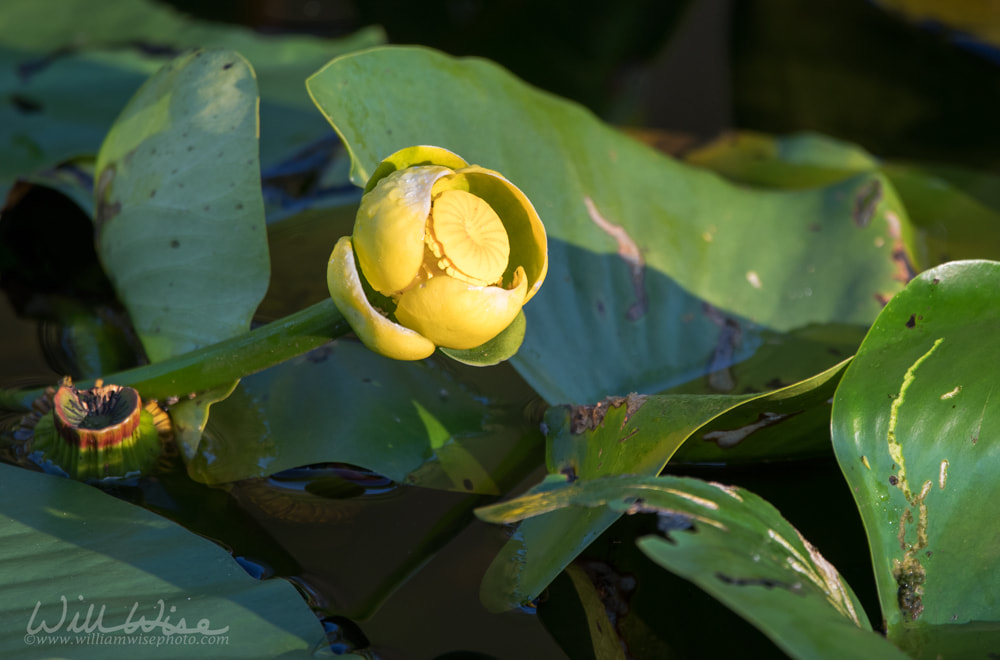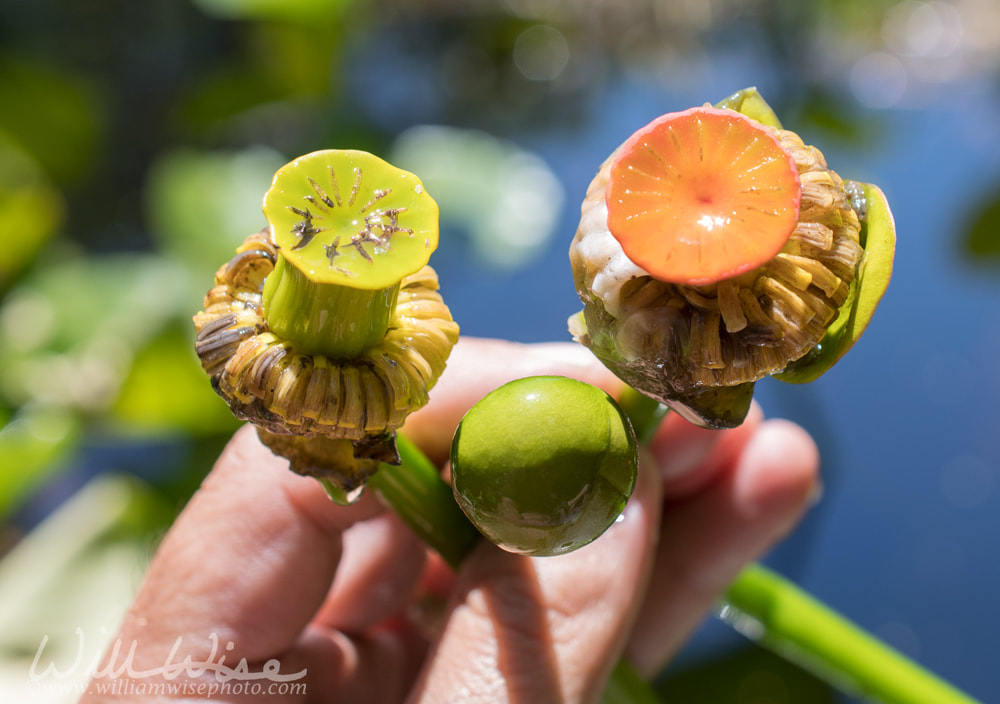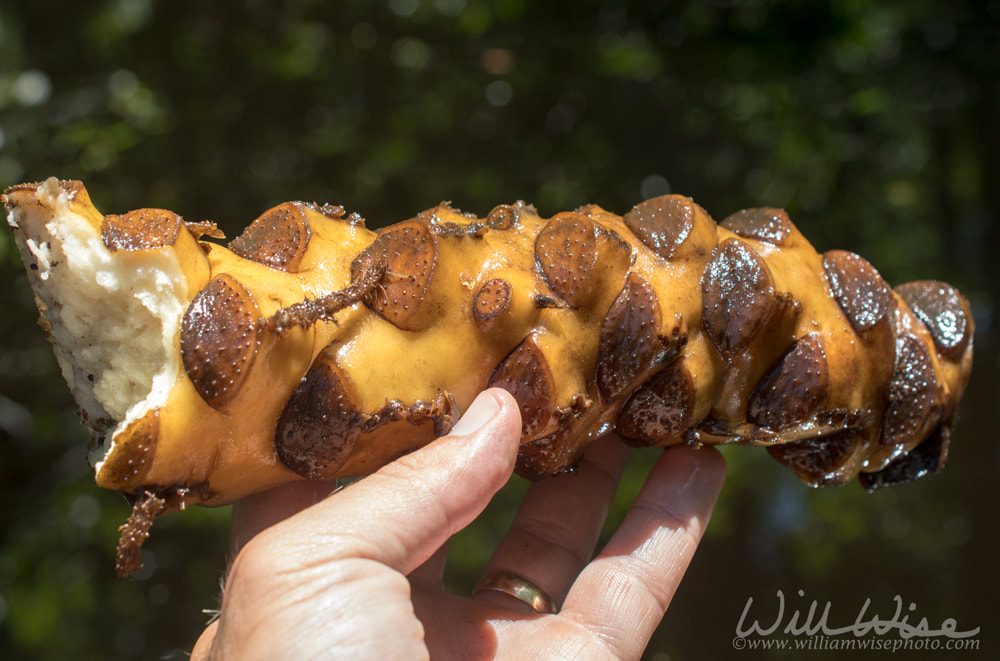 Okefenokee Photography by William Wise. A nature photo journal exploration of Georgia's Okefenokee Swamp, the Land of Trembling Earth, one of the largest blackwater swamps in North America. The alligators, birds, snakes and wildlife of Okefenokee National Wildlife Refuge and Stephen C Foster State Park. -- "What a wildly wonderful world, God! You made it all, with Wisdom at Your side, made earth overflow with your wonderful creations." Psalms 104 The Message  Yellow Water Lily spatterdock flower and lily pads. Nuphar advena is native throughout the eastern United States and at some parts of Canada. Spatterdock was long used in traditional medicine, with the root applied to the skin and/or both the root and seeds eaten for a variety of conditions. The seeds are edible, and can be ground into flour. The root is edible too, but can prove to be incredibly bitter in some plants. Stephen C Foster State Park. Okefenokee National Wildlife Refuge, Georgia. May 2020. The waters of the Okefenokee Swamp, particularly the more open lakes, are often covered in bright green lily pads. The large white blooms of the American White Water Lily, Nymphaea odorata, might be the more recognizable of the species, but on my springtime trips, the Yellow Bonnet Lily, or Spatterdock, is more prevalent. The Yellow Bonnet Lily, Nuphar advena, goes by several names: Spatterdock, Alligator Bonnet, or Pond lily to name a few. The yellow flowers are smaller and less elaborate the white lily, but these yellow dots can be seen all along the canoe runs of the Okefenokee. And if one looks close enough, there may be alligator eyes peering from between the rows of flowers. The Spatterdock leaves are typically oblong and often stand up on their stems off the surface of the water, almost appearing to curl under the southern heat and humidity. The White Water Lily’s pads usually lie flat on the surface of the water. Underneath the dark tannin-stained swamp water, the Bonnet Lily’s long stem petiole attaches to a rough looking stem, or rhizome, covered in leaf scars. When these rhizomes are stirred up or broken loose by marauding alligators or passing motor boats, they float to the surface and can often trick the eye into thinking an alligator lay on the surface. The leaf scars can resemble the rough ridges and scutes of an alligator’s back or tail. The starchy stems, much like that of a potato, were apparently cooked and eaten by the Indians and swampers of the Okefenokee and were called “Gator Taters.” If I come across a recipe in my swamper research, I’ll be sure to post it.
0 Comments
Your comment will be posted after it is approved.
Leave a Reply. |
Categories
All
Archives
April 2025
|
|
All content is ©williamwisephoto.com. Please don't steal images. My images are available at dreamstime.com. Stock sales go into the shelter photography program.
|
In December 1993 I came to know the Designer and Creator of this wonderful planet and its creatures: Jesus Christ.
|
Donations help support the animal shelter adoption photography equipment and adoption website hosting and domain fees. Thanks for your support!
|



